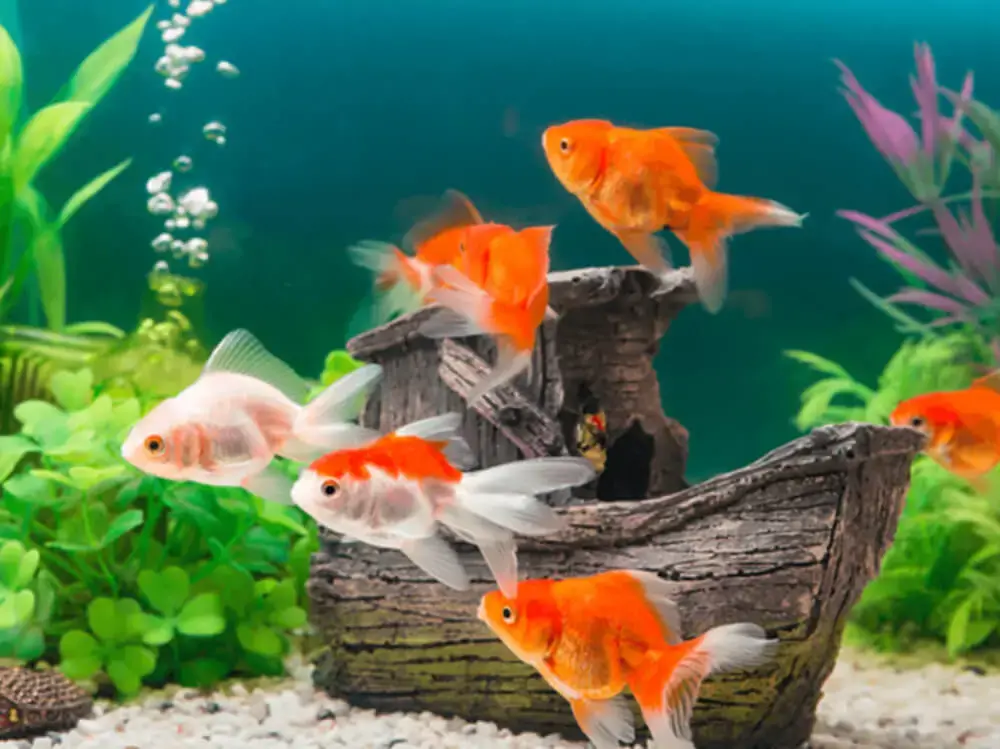
Setting up a coldwater aquarium can be a fun, relaxing, and budget-friendly way to dive into the world of fishkeeping. Unlike tropical tanks, coldwater tanks don’t require a heater, making them easier to maintain and perfect for beginners. In this guide, we’ll walk you through everything you need to know—from choosing the right tank and equipment to selecting the best fish and plants.
What Is a Coldwater Tank?
A coldwater tank is an aquarium that houses fish and aquatic life that thrive in cooler water temperatures, typically between 60°F and 72°F (15°C–22°C). These tanks are ideal for species that don’t need heated water and are often more energy-efficient since they don’t rely on a heater.
Benefits of a Coldwater Aquarium
- No heater needed – Lower energy use and less equipment.
- Hardier fish species – Many coldwater fish are more tolerant of environmental changes.
- Great for beginners – Easier to maintain water conditions and less temperature stress on fish.
- Budget-friendly – Fewer startup costs compared to tropical setups.
Step 1: Choose the Right Tank Size
Start by deciding how many fish you want to keep and their adult size. A common beginner mistake is choosing a tank that’s too small.
Recommended tank size: Minimum of 20 gallons (75 liters) for most setups.
Why bigger is better: More water volume means more stable water parameters and less stress on your fish.
Popular Coldwater Fish and Tank Size Needs
Fish Species Minimum Tank Size
Goldfish 20–30 gallons for one, +10 gallons per additional fish
White Cloud Minnow10 gallons for a small school
Hillstream Loach20 gallons and up
Rosy Barb30 gallons and up for a small group
Step 2: Essential Equipment Checklist
Even without a heater, a coldwater aquarium still needs key equipment for a healthy ecosystem:
Filtration System
Why it’s essential: Coldwater fish, especially goldfish, produce a lot of waste. A powerful filter keeps ammonia, nitrites, and nitrates in check.
Recommended: A hang-on-back (HOB) filter or a canister filter for larger tanks.
Lighting
Coldwater fish don’t need intense lighting, but plants do if you plan to have a planted tank. LED lights are energy-efficient and customizable.
Thermometer
Even if you don’t need a heater, it’s important to monitor water temperature to ensure it stays in the ideal range.
Air Pump & Air Stone (Optional)
Improves oxygen levels, especially useful if your filter doesn't create much surface agitation.
Step 3: Substrate and Decor
Choose your substrate and decorations based on the type of fish and whether you plan to add live plants.
Substrate Options:
Gravel: Best for goldfish and general use.
Sand: Ideal for bottom dwellers like hillstream loaches or planted tanks.
Decor Tips:
Add hiding spots using rocks, caves, or driftwood.
Avoid sharp decorations that might injure delicate fins.
Rinse all decorations before placing them in the tank.
Step 4: Add Coldwater-Friendly Plants (Optional but Recommended)
Plants help oxygenate the water, absorb excess nutrients, and create a more natural environment.
Top Coldwater Plant Choices:
Anubias
Java Fern
Hornwort
Elodea (Anacharis)
Marimo Moss Balls
These plants do well in unheated tanks and low light.
Step 5: Cycle Your Aquarium
Before adding fish, you must establish beneficial bacteria that break down fish waste—this process is called cycling the tank.
How to Cycle:
Set up your tank with all equipment running.
Add a source of ammonia (like fish food or bottled ammonia).
Test water parameters regularly using a liquid test kit.
Wait until ammonia and nitrite levels drop to 0 and nitrate is under 40 ppm.
This can take 4–6 weeks, but using bacterial starters can speed up the process.
Step 6: Add Your Fish Slowly
Once your tank is fully cycled, introduce fish gradually:
Add 1–2 fish at a time to avoid overloading the filter.
Acclimate fish slowly to the water temperature and chemistry using the drip method or by floating their bag in the tank.
Ongoing Maintenance Tips
Weekly Water Changes: Remove 25–30% of the water to keep nitrates low.
Gravel Vacuuming: Clean waste buildup from the substrate.
Filter Maintenance: Rinse media in tank water monthly to avoid killing beneficial bacteria.
Check water parameters weekly.
Best Coldwater Fish for Beginners
Here are some easy-care, beginner-friendly coldwater fish:
Goldfish (Fancy or Common)
Hardy, fun to watch, but grows large and needs space.
White Cloud Mountain Minnows
Peaceful schooling fish; perfect for smaller tanks.
Rosy Barbs
Active and colorful; best kept in groups of 5 or more.
Hillstream Loach
Cool-looking algae eaters that resemble mini stingrays.
Common Mistakes to Avoid
Overstocking the tank – Coldwater fish need more space than you think.
Skipping the nitrogen cycle – This can harm or kill your fish.
Using room-temperature tap water without treatment – Always dechlorinate water before adding it.
Not testing water regularly – Invest in a good test kit!
Final Thoughts
A coldwater tank setup is perfect for fishkeepers looking for a low-maintenance, beginner-friendly experience. With the right planning, equipment, and care, you can enjoy a beautiful underwater world full of life, without the extra hassle of heaters and complex gear.
Need help choosing fish or setting up your first coldwater tank? Drop your questions in the comments or explore our other fish care guides!
